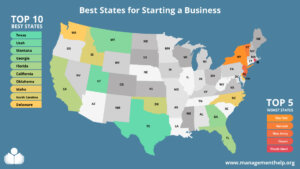Fixed fee recruitment is a hiring model in which businesses pay a flat rate to fill a role, regardless of the position’s salary or seniority. Unlike traditional recruitment agencies that charge a percentage of the candidate’s salary (often 15–25%), fixed-fee recruiters offer a predictable, budget-friendly alternative.
With rising hiring costs and pressure to maximize ROI, many businesses, especially startups and small enterprises, are turning to this model for its cost transparency and efficiency. It’s appealing for companies making multiple hires or filling high-volume roles.
In this article, we’ll explain how fixed fee recruitment works, how it compares to traditional hiring methods, the pros and cons, typical pricing, and which types of businesses benefit most from this approach.
What Is Fixed Fee Recruitment?
Fixed fee recruitment is a hiring model in which employers pay a flat, predetermined fee for recruitment services, regardless of the candidate’s final salary or position level. Unlike traditional recruitment methods that charge a percentage of the candidate’s salary (often 15%–30%), fixed-fee models offer cost predictability and transparency from the start.
This approach eliminates the uncertainty of commission-based pricing and can significantly reduce hiring costs, especially for roles with higher salary brackets or companies making multiple hires at once.
Specialized agencies, online hiring platforms, and HR outsourcing services typically offer fixed-fee recruitment. These providers often streamline recruitment using digital tools, job board syndication, and internal databases to deliver pre-screened candidates directly to employers at a fixed price.
How Does Fixed Fee Recruitment Work?
Fixed fee recruitment simplifies the hiring process with a structured, transparent approach. Here’s how it typically works from start to finish:
1. Employer Submits Job Details
The process starts when the employer provides a job description, role requirements, and any preferred candidate criteria. This helps the recruitment team understand the scope and expectations.
2. Candidate Sourcing & Screening
The recruitment team begins sourcing candidates through job boards, internal databases, and networks. They screen resumes, conduct initial interviews, and filter out unqualified applicants.
3. Shortlisted Applicants Delivered
Only the most suitable candidates are shortlisted and sent to the employer for review. This saves time and ensures you’re only evaluating quality matches.
4. One-Time Flat Fee Charged
Unlike traditional percentage-based recruitment, the employer pays a fixed fee regardless of the candidate’s salary. This provides cost certainty and eliminates surprise costs.
5. Timeline Expectations
Most fixed fee services aim to deliver qualified candidates within 7 to 14 business days, though the timing may vary based on the role complexity and industry demand.
Fixed Fee vs. Traditional Recruitment
Choosing the right recruitment model can significantly impact your hiring budget and outcomes. Here’s how fixed fee recruitment compares to the traditional percentage-based model across key areas.
1. Pricing Structure Comparison
Fixed Fee Recruitment charges a flat, upfront rate, regardless of the candidate’s salary. For example, hiring a sales associate or a marketing manager might cost the same fixed rate (e.g., $1,000–$3,000 per role).
Traditional Recruitment typically charges 15%–25% of the candidate’s annual salary. So if you hire a candidate at $80,000, you could pay $12,000–$20,000 in recruiter fees.
Key Difference: Fixed fee offers cost predictability, while traditional pricing scales with candidate seniority.
2. Candidate Quality and Reach
Fixed-fee recruiters often work with larger pools of candidates and may use standardized sourcing techniques. They’re great for filling common roles quickly (e.g., admin, sales, customer service). However, their reach may not extend deeply into niche or executive networks.
Traditional recruiters offer more personalized headhunting and tap into deeper industry-specific talent pools. They typically deliver higher-touch service and may be better for senior-level or hard-to-fill roles.
Key Difference: Traditional recruiters offer deeper specialization, while fixed-fee services prioritize speed and volume.
3. Pros and Cons of Each Model
| Feature | Fixed Fee Recruitment | Traditional Recruitment |
| Pricing | Flat, predictable cost | % of salary—can become expensive |
| Best For | Common roles, multiple hires, startups | Niche, executive, or strategic hires |
| Speed | Often faster due to standardized process | May take longer with bespoke sourcing |
| Candidate Quality | Good for general roles; may lack specialization | Higher touch, better-matched senior talent |
| Budget-Friendliness | Excellent for cost control and planning | Not ideal for budget-conscious hiring |
| Customization | Less personalized—standard screening | Highly customized search and vetting |
Pros & Cons of Fixed Fee Recruitment
Pros
- Predictable, Transparent Pricing: You pay a flat fee upfront or per role, regardless of salary, simplifying budgeting and eliminating surprise costs.
- Cost-Effective for Bulk or Frequent Hiring: Ideal for businesses hiring multiple roles or regularly filling similar positions, as it avoids stacking commissions.
- Faster Hiring Process: Fixed-fee recruiters often operate efficiently, delivering pre-screened candidates quickly to meet tight timelines.
- Scalable for SMEs and Startups: Smaller companies benefit from affordable, streamlined recruiting without a large in-house HR team or costly retainers.
- No Commission-Based Bias: Unlike percentage-based recruiters, fixed fee providers aren’t incentivized to push higher-salary candidates just to increase their commission.
Cons
- Limited Personalization or Headhunting: You may not get traditional agencies’ high-touch, deeply tailored service, especially for executive or niche roles.
- Varying Quality Across Providers: Not all fixed-fee services are equal. Some may lack industry expertise, reducing the quality of candidate matches.
- Upfront Payment Risks: Some models require full payment regardless of hire success, which can be risky if the role is hard to fill or the hire doesn’t work out.
- Not Ideal for Specialized Positions: Roles that demand rare skill sets or deep industry experience might be better suited to retained or contingency recruiters.
Ideal Use Cases for Fixed Fee Hiring
Fixed fee recruitment isn’t a one-size-fits-all solution, but it shines in several key hiring scenarios. Here’s when it makes the most sense:
- Startups and Small Businesses Hiring on a Budget: Fixed pricing helps startups avoid the high costs of traditional recruiting, offering access to vetted candidates without stretching the budget.
- Bulk Recruitment Drives: Whether you’re staffing up a new location or launching a new team, fixed-fee models scale well, making multiple hires more cost-efficient.
- Roles with High Applicant Volume: Positions like customer service, sales, or administrative support often attract large pools of applicants, which fixed-fee recruiters can efficiently sort and filter.
- Companies with Internal HR Teams: Organizations with HR infrastructure may only need external help with sourcing or screening, making fixed-fee services a smart supplemental option.
How Much Does Fixed Fee Recruitment Cost?
Fixed-fee recruitment typically costs between $500 and $3,000 per hire, depending on the complexity and seniority of the role. Entry-level and high-volume roles (like customer service or admin support) often fall at the lower end of the scale, while mid- to senior-level roles may cost more.
The flat fee usually includes core recruitment services such as:
- Job ad creation and posting across multiple platforms
- Initial candidate screening and shortlisting
- Applicant tracking and interview coordination
Some providers also offer optional add-ons for an extra charge, including:
- CV or resume writing support
- Psychometric testing or skills assessments
- Onboarding assistance and offer management
This transparent pricing model helps employers avoid the unpredictability of percentage-based fees, making it ideal for businesses that want to budget more confidently while hiring efficiently.
Choosing the Right Fixed Fee Recruitment Partner
Selecting the right fixed-fee recruiter can make or break your hiring success. Here’s what to consider before signing any agreement:
Key Questions to Ask
- What is your typical turnaround time for filling roles? Understand how quickly they can deliver quality candidates for your industry.
- Do you have experience hiring in my specific industry or role type? Industry expertise often leads to better candidate matches and fewer wasted interviews.
- What is your refund or replacement policy? Always clarify what happens if the hire doesn’t work out or if no suitable candidates are found.
- What services are included in the fixed fee? Some platforms include job advertising, screening, and interview coordination, while others may charge extra.
Red Flags to Watch For
- Lack of transparency on costs or deliverables: A reputable partner should clearly outline what you get for your payment, with no hidden fees.
- Poor communication or slow response times: If it’s hard to get updates early on, it could be even worse once the process is underway.
- No industry-specific expertise: Generalist recruiters may not understand the nuances of your roles, leading to poor-fit candidates.
- Vague guarantees or refund policies: Be cautious if the service offers no fallback plan if the hire doesn’t work out.
FAQ – Fixed Fee Recruitment
Thinking about switching to fixed-fee recruitment but still have questions? Before committing to this hiring model, these answers cover employers’ most common concerns.
Final Thoughts: Is Fixed Fee Recruitment Right for You?
Fixed-fee recruitment is ideal for startups and growing businesses needing predictable costs and quick hires for common roles. It’s great for bulk hiring or when you already have internal HR support. However, companies seeking executive or niche talent may find it too limited. For most budget-conscious teams, it’s a smart, scalable solution. Just be sure the role fits the model.
 Sections of this topic
Sections of this topic
















